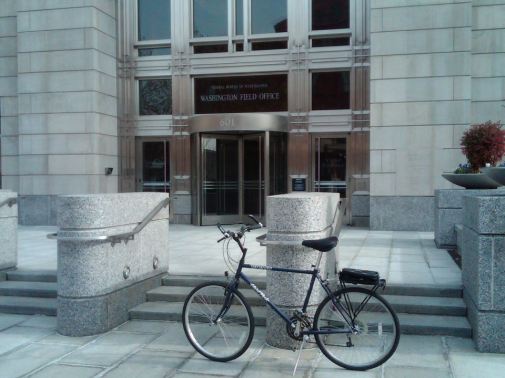Patriotically located at 1776 on D Street in northwest D.C.’s Downtown neighborhood (MAP), The National Society Daughters of the American Revolution building is headquarters to a non-profit service organization of women who directly trace their lineage to a soldier or other person involved in the United States’ efforts towards independence. The headquarters buildings also house: The DAR Museum, that contains over 30,000 historical relics; The DAR Library, that includes a collection of genealogical and historical publications for the use of staff genealogists verifying application papers for the organization, and; DAR Constitution Hall, a is a concert hall to house its annual convention of membership delegations. Founded in 1890, the organization currently has over 185,000 current members in the United States and other countries.
The DAR raises funds a number of historic preservation and patriotic endeavors. For example, they began a practice of installing markers at the graves of Revolutionary War veterans to indicate their service, and adding small flags at their gravesites each Memorial Day. Other activities included commissioning and installing monuments to battles and other sites related to the American Revolution. In addition to installing markers and monuments, DAR chapters have purchased, preserved, and operated historic houses and other sites associated with the war. The DAR also recognizes women patriots’ contributions as well as those of soldiers.
As I was riding past the DAR Headquarters on this bike ride, I decided to stop and explore the grounds. And on the grounds I was able to enjoy a number of memorials and monuments. Among them was the DAR Memorial Garden located on the north side of the main building. The garden features a gated entryway leading to a stone plaza, a number of annual and perennial plantings, as well as benches on which to sit and enjoy the beautiful setting. The Memorial Garden also features the beautiful Mississippi blue-tiled fountain, as a lasting tribute to honor the service, sacrifice and accomplishment of those who comprised the organization throughout its history.
Also in the Memorial Garden is a granite monument, known as The Daughters Tribute, which was placed there in honor of the sacrifice and dedication of the nearly one million women who have sustained the Society and its mission of service. The inscription on the monument reads, “To the women whose patriotic devotion has sustained the National Society Daughters of the American Revolution, This Daughter’s Tribute Garden rededicated to honor every member in celebration of the 125th anniversary of the NSDAR, October 11, 2015, Lynn Forney Young, NSDAR President General 2013 – 2016.” The Daughters Tribute also includes an electronic database, accessed via the National Society’s Digital Donor Wall, which allows for the honoring of DAR members.
Springtime in D.C. is a good time to visit gardens. And I highly encourage anyone desiring to make a visit to enjoy the city’s springtime beauty to plan and make a list of the gardens that shouldn’t be missed, such as The Mary Livingston Ripley Garden and The the Enid A. Haupt Garden – two of my favorites. And of course, The United States Botanic Garden. And now, I recommend The Daughters of the American Revolution Tribute Garden be added to that list.


[Click on the thumbnails above to view the full size photos]
















































